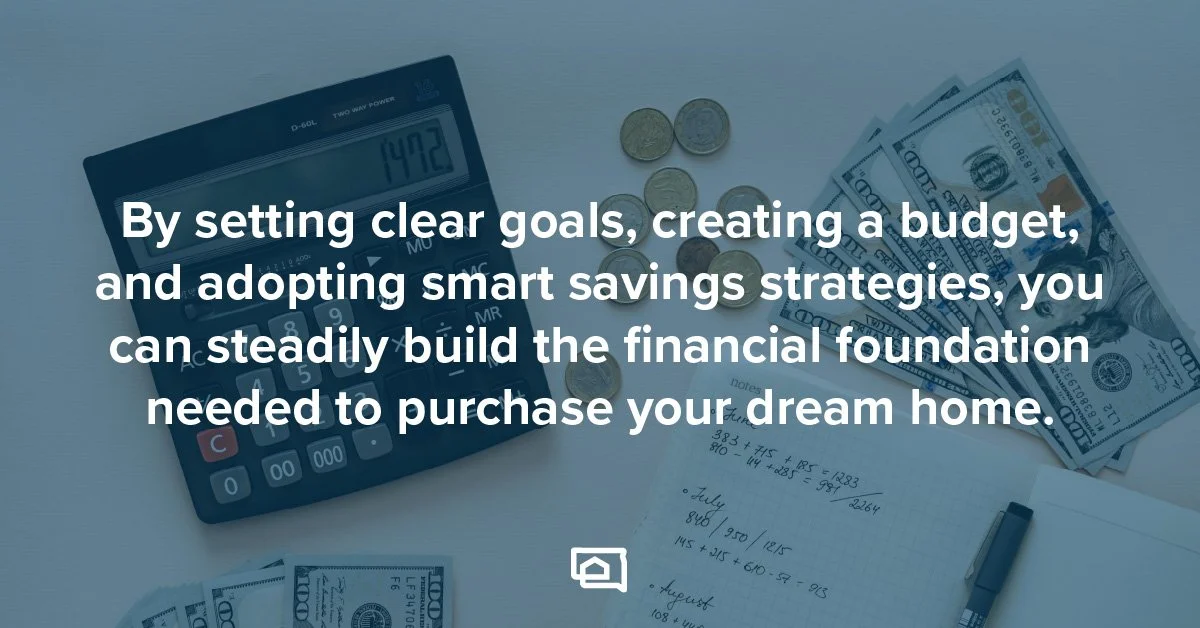Savings Strategies: How to Boost Your Down Payment Fund for Your First Home
Embarking on the journey of buying your first home is an exciting and monumental step in your life. However, it's often accompanied by one significant financial challenge: accumulating a downpayment. While the prospect of saving a substantial sum can feel daunting, rest assured that with the right savings strategies, you can turn your dream of homeownership into a reality.
In this guide, we'll look at ways to increase your downpayment fund, making it easier to achieve. By the end, you'll have practical knowledge that will pave the way for your future home.
Set Clear Goals and Budget
The first step in boosting your downpayment fund is to set clear savings goals and create a budget. Determine how much money you'll need for a downpayment based on the price range of homes you're considering. Then, create a monthly budget that outlines your income and expenses. This will help you identify areas where you can cut back and allocate more funds to savings..
Open a Dedicated Savings Account
Consider opening a separate savings account specifically for your downpayment. This will help you keep your downpayment funds separate from your regular spending money, reducing the temptation to dip into it for non-essential expenses. Look for a high-yield savings account to earn some interest on your savings over time.
Automate Your Savings
Set up automatic transfers from your checking account to your dedicated downpayment savings account. This "set and forget" approach ensures that you consistently contribute to your fund without having to remember to do it manually. Even small, regular contributions can add over time.
Reduce Unnecessary Expenses
Identify areas in your daily life where you can cut back on unnecessary expenses. This could mean making coffee at home instead of buying it daily, cooking meals instead of dining out, or canceling unused subscription services. Redirect the money you save into your downpayment fund.
Increase Your Income
Consider finding ways to increase your income, whether it's taking on a part-time job, freelancing, or selling items you no longer need. Every extra dollar you earn can go directly into your fund, helping you reach your goal faster.
Save Windfalls and Bonuses
Put any unexpected windfalls, such as tax refunds, work bonuses, or gifts, directly into your downpayment fund. Instead of using this money for immediate expenses or splurges, use it to accelerate your savings progress.
Track Your Progress
Regularly review your savings progress and adjust your strategy as needed. Celebrate milestones along the way, and consider increasing your savings rate as your financial situation improves. Staying motivated and focused on your goal will help you stay on track.
Stay Patient and Persistent
Saving for a downpayment takes time and discipline, so be patient and stay persistent. There may be setbacks or unexpected expenses along the way, but with determination, you can overcome them and continue working toward your goal. We have downpayment assistance, to try and help avoid the frustration.
Boosting your downpayment fund for your first home requires commitment and strategic planning. By setting clear goals, creating a budget, and adopting smart savings strategies, you can steadily build the financial foundation needed to purchase your dream home. Remember that the journey to homeownership is achievable with patience, discipline, and a well-executed savings plan. Start today, and you'll be one step closer to making your first home a reality. For more information on being a first-time home buyer, we have lots of resources for you to check out.




